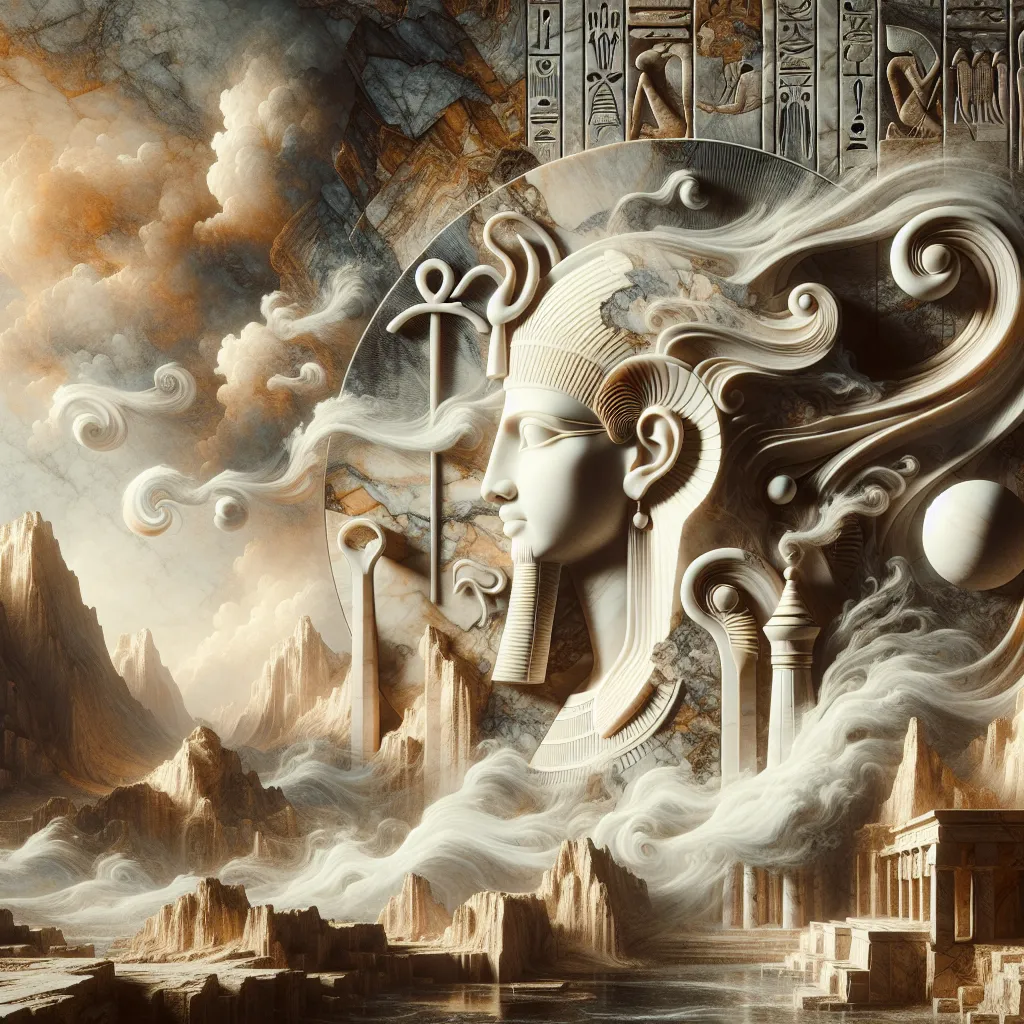
- Published on
- Authors

- Name
- You
Breath and the Afterlife: Egyptian Views on Breath Beyond Death
The breath of life, or ka, is often seen as a mere physical function, but ancient Egyptians held a belief that traversed the boundaries of life and death. This article explores the profound Egyptian views on breath, its mystical significance in the journey to the afterlife, and the maintenance of the soul's vitality. We shall delve into a blend of advanced scientific understanding and ancient mystical wisdom, making this exploration engaging for all audiences.
The Concept of Ka: The Breath of Life
In ancient Egyptian spirituality, ka was much more than the act of breathing. Ka represented the breath of life, an essential part of a person's existence from birth, through life, and into the afterlife.
Table 1: Elements of the Ka
| Element | Description | Role |
|---|---|---|
| Ka | Spiritual Double | Vital force that sustained life and existence |
| Ba | Personality | Part of the soul that could travel between the living world and the afterlife |
| Akh | Transformed Self | The effective being that results when ka and ba are united in the afterlife |
Breath and the Afterlife
The breath was believed to be so vital that it had to be preserved and continued beyond death. Preservation of the body through mummification was not just a physical process but a meticulous ritual to ensure that the ka could recognize and return to its body. Without the ka, the person could not receive offerings or sustain themselves in the afterlife.
Mystical Rites and Scientific Knowledge
The ancient Egyptians performed intricate ceremonies aimed at ensuring the sustainability of ka. The Opening of the Mouth ritual was one of the critical rites performed to restore the deceased's ability to breathe, eat, and speak in the afterlife. This echoes modern understandings of the importance of vital functions, reflecting a sophisticated intertwining of spiritual and physiological knowledge.
Table 2: The Opening of the Mouth Ritual
| Step | Procedure | Purpose |
|---|---|---|
| 1. | Purification | Prepare the priest and the body |
| 2. | Anointing and Dressing | Sanctify the body |
| 3. | Using Ritual Tools | Open the mouth and eyes to restore senses |
| 4. | Recitations | Invoke divine powers and blessings |
Modern Science Meets Ancient Mysticism
Modern science provides a deeper understanding of the physiological aspects of breath, linking it to the brain, emotions, and overall health. The ancient practice of ensuring breath continuity after death aligns intriguingly with today's understanding of the brain's role in defining consciousness and identity.
Breath Work and Consciousness
Contemporary studies in neuroscience have shown that breathing patterns can directly influence the brain's state, affecting emotional and psychological experiences. This scientific revelation resonates with the ancient belief that breath is fundamental to the essence of being.
Conclusion
The ancient Egyptian views on breath extended beyond the material realm, embodying a profound blend of science and mysticism. Their rituals, deeply rooted in the belief that ka must persist beyond death, reveal a nuanced understanding of human existence. By examining their practices, melded with modern scientific insights, we find a captivating narrative that bridges the ancient and the contemporary, offering new perspectives on the journey of life, death, and beyond.
Thank you for delving into the awe-inspiring depths of Egyptian spirituality and the breath of life. May this blend of ancient wisdom and scientific knowledge inspire a deeper appreciation for the breath that sustains us all.
